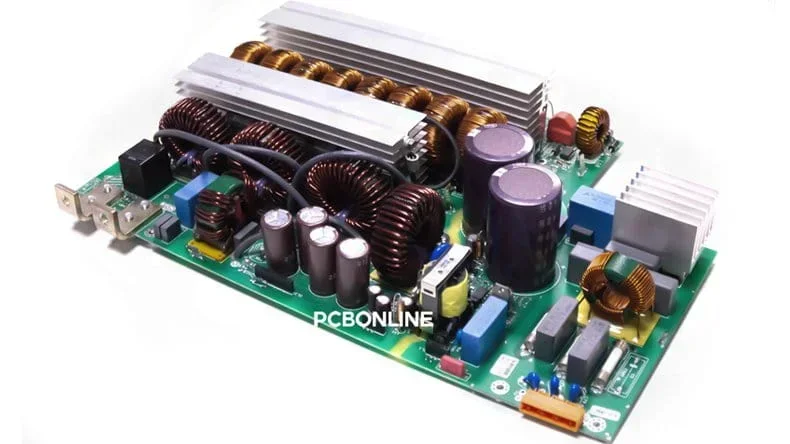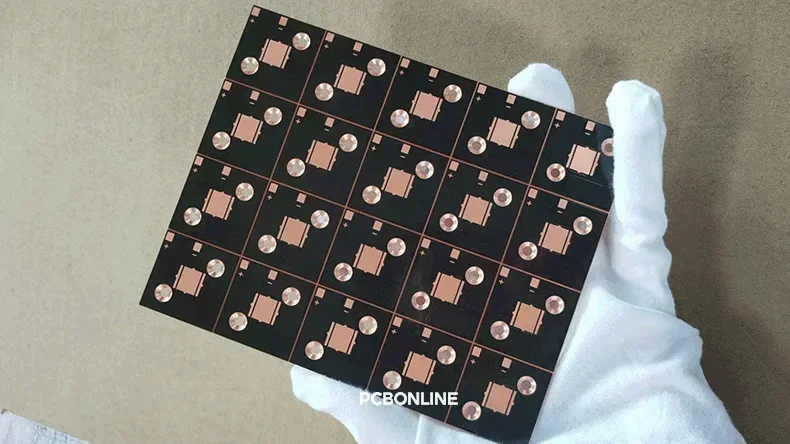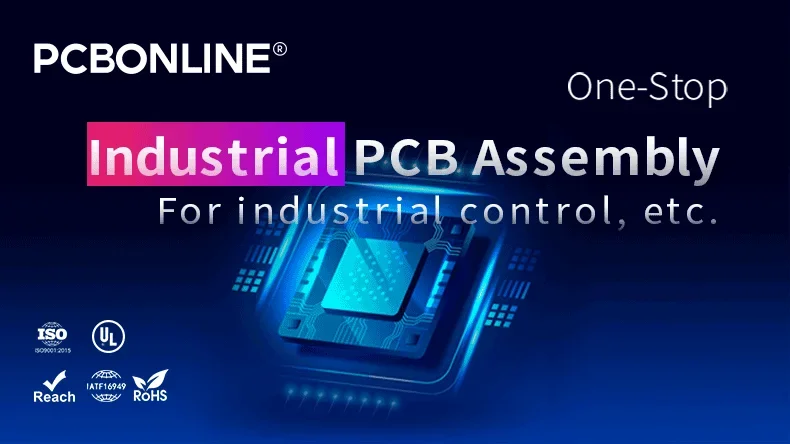
Automatic transfer switches are power switching devices used for the safe and reliable load transfer between AC mains and backup power sources.
In this article, we will explore the functions, features, applications, and circuit design of PLC-controlled automatic transfer switch systems. Besides, you can find a turnkey PCB (printed circuit board) assembly manufacturer for automatic transfer switches and PLC-related applications.
Table of contents:
Part 1. Why Use PLC-controlled Automatic Transfer Switches? Part 2. Role of PLCs in Backup Power Systems Part 3. Components of PLC-controlled ATS System Part 4. Circuit Design of Automatic Transfer Switch Advantages and Challenges of PLC-controlled Automatic Transfer Switch OEM Industrial PCB Manufacturer for PLCs, Automatic Transfer Switches, etc.Why Use PLC-controlled Automatic Transfer Switches?
An uninterrupted electrical power supply is critical for industrial processes and operations. Power shutdowns halt production and pose a risk of damage to sensitive equipment. To ensure a continuous power supply, many industries use backup generators that provide electricity during outages or emergencies. For safe and reliable switching between power sources, Automatic Transfer Switches (ATS) are employed.
Once a utility power failure is detected, the ATS automatically switches the load to the backup generator. When utility power is restored, the ATS transfers the load back to the main supply.
Conventional ATS units operate automatically but lack the intelligence and flexibility to communicate with PLCs.
Modern energy management and monitoring systems often rely on Programmable Logic Controllers (PLCs) and Remote Terminal Units (RTUs) for advanced control and remote monitoring. Examples include Supervisory Control and Data Acquisition (SCADA) systems, which are widely used in industrial facilities and electrical grid networks to monitor and control equipment and processes.
As a result, the demand for PLC-controlled ATS solutions for smart power systems is increasing.
These smart automatic transfer switch units not only handle power source switching but also provide real-time diagnostics, remote control, and seamless integration with industrial automation platforms.

Role of PLCs in Backup Power Systems
For simple load-switching applications, traditional automatic transfer switch units are usually sufficient. However, in smart power systems that require remote monitoring and advanced control features, PLC-controlled automatic transfer switch units are essential.
Conventional ATS units are limited to basic load switching and lack provisions for interlocking, intelligent decision-making, and system integration.
In contrast, PLC-controlled ATS units can implement customized logic for load switching, including time delays, voltage fluctuation detection, overload detection, thermal overload protection, and scheduling functions.
These intelligent systems also enable remote monitoring and control, allowing operators to supervise and manage power systems from a centralized control room. This is an essential feature for large-scale or geographically distributed sites.
Additionally, PLC-controlled ATS units can be seamlessly integrated into larger automation systems, such as Supervisory Control, SCADA systems, or Building Management Systems (BMS).
Another prominent advantage of PLC-controlled ATS systems is their advanced diagnostics capabilities, including real-time fault detection, alarm management, and status indications.

Components of PLC-controlled ATS System
The main components of a PLC-controlled ATS system include the PLC, smart automatic transfer switch unit, generator controller, current transformers (CTs), potential transformers (PTs), and an operator panel.
The automatic transfer switch unit is connected to both the AC mains and the generator. It detects voltage and current levels either through built-in sensors or via external CTs and PTs installed on the AC mains and generator lines.
Smart automatic transfer switch units typically come with built-in voltage and current sensors. The voltage and current feedback are provided to the PLC by the ATS unit and the generator control unit.
Based on these feedback signals, the PLC decides which power source to use. The PLC then sends actuation signals to the ATS unit, which performs the load switching operation.
The ATS unit and PLC also communicate with the generator control unit, which provides information regarding fault conditions, voltage, current, power factor, temperature, and fuel level.
By analyzing these parameters, the PLC decides whether or not to start the backup generator. The PLC also monitors fault conditions on the AC mains and can disconnect power in case of critical faults.
Additionally, the PLC-controlled ATS can communicate with a Human-Machine Interface (HMI) or SCADA system via Modbus, Ethernet, or Profibus protocols to enable remote monitoring and control.
A larger switchgear network can also be implemented to manage multiple power sources and smart ATS units.

Circuit Design of Automatic Transfer Switch
A PLC-controlled automatic transfer switch system consists of two main parts: the embedded control logic, handled by a PLC, and the power switching circuit, housed within the ATS unit.
In this arrangement, the PLC serves as the central controller responsible for reading sensor data and communicating with the generator controller and ATS.
The system acquires current and voltage values either directly from CTs and PTs or via the generator control unit. This data is sent to the PLC, which analyzes all relevant parameters and decides whether to actuate the backup power source or not.
Once the decision is made, the PLC sends a command to the automatic transfer switch to perform the load transfer operation.
The automatic transfer switch contains the actual switching components, typically magnetic contactors, motorized change-over switches, or solid-state relays (SSRs). It also includes electrical and mechanical interlocks to ensure safe operation and to prevent both power sources from getting active simultaneously.

The printed circuit board (PCB) of a PLC-controlled automatic transfer switch system is designed to handle both control and power signals.
The control side of the circuit processes low-voltage signals from the PLC and sensors for logic processing. The high-voltage side is responsible for actuating relays and interfacing with power switching components.
Galvanic isolation between the low-voltage and high-voltage sections is achieved using opto-isolators and relay driver circuits.
Adequate creepage and clearance distances are maintained between HV and LV traces to prevent arcing, sparking, interference, and parasitic coupling.
Relay drivers and other active components may generate excess heat, requiring heat sinks or active ventilation for effective thermal management.
The PCB also features LEDs or an LCD screen for status display and alarm indication. Additionally, test points are provided for manual testing and maintenance of the ATS circuit.
Advantages and Challenges of PLC-controlled Automatic Transfer Switch
The following are the major advantages of PLC-controlled ATS systems.
1. Logic customization: PLCs allow full control over system logic. They can implement complex logic sequences and handle multiple ATS units simultaneously.
2. Remote monitoring: PLCs enable real-time remote monitoring of multiple ATS units and display system status on centralized or distributed HMI/SCADA screens.
3. Data logging: Another strong feature of PLC-controlled ATS is data logging, which allows viewing of historical trends and fault events, leading to easier maintenance and troubleshooting.
4. System integration: PLC-controlled ATS units can be easily integrated into larger automation systems such as SCADA or BMS. This enables remote monitoring and control of ATS units.
The major challenges associated with PLC-controlled ATS units are as follows:
1. Added complexity: PLC-controlled ATS units introduce additional complexity to system design due to their smart features and therefore require skilled personnel for installation and maintenance.
2. Higher cost: PLC-controlled ATS units are more expensive compared to conventional ATS units.
3. Cybersecurity: PLC-controlled ATS units are vulnerable to cyberattacks due to the use of digital communication protocols in PLCs and SCADA systems.
OEM Industrial PCB Manufacturer for PLCs, Automatic Transfer Switches, etc.
PLC-controlled automatic transfer switch units are ideal for smart industrial power control systems. If you are looking for custom electronics manufacturing for industrial controls, you can choose the OEM PCB manufacturer, PCBONLINE, for one-stop electronics manufacturing services from PCB fabrication to box-build assembly and value-added services until you receive the finished devices.
Founded in 1999, PCBONLINE has two large advanced PCB manufacturing bases, one turnkey PCB assembly factory, stable supply chains, and an R&D team. Besides, it keeps strategic cooperation with the top 3 mold/enclosure manufacturers in China.

The R&D and engineering team at PCBONLINE offers professional DFM checks before and during industrial control prototyping to ensure the success of batch production, including checks of Gerber and BOM, jig/fixture/PCB stencil design, manufacturing process, testing designs, and solving all issues throughout the project to ensure seamless manufacturing.
PCBONLINE has powerful OEM manufacturing capabilities for industrial controls and related products, including PCB fabrication, component sourcing, PCB assembly, IC programming, thermal aging testing, conformal coating, PCBA functional testing, box-build assembly, labeling, packaging, application testing, and shipping.
As a PCBA OEM source factory manufacturer, PCBONLINE offers competitive prices for OEM manufacturing for industrial controls, including the ATS systems.
PLCs and industrial control-related projects prioritize thermal management and high-current carrying capabilities. For this, we have advantages in thermal management with thermal path design, PCB busbars, thick-copper PCBs up to 14oz, copper-core PCBs, and ceramic PCBs, etc.
High-quality PCB/PCBA manufacturing meeting your industrial control application demands, including ISO 9001:2015, ISO 14001:2015, ISO IATF 16949:2016, RoHS, REACH, UL, IPC-A-610 Class 2/3, and IPC-A-610 Class 2/3.
No matter what quantity you want, we always prioritize quality and provide one-on-one engineering support, meeting and exceeding your expectations.
No matter what your industrial project is, PCBONLINE can meet your application requirements and provide PCBAs and box builds with reliable quality at reasonable prices. To get a quote for your PLC-controlled automatic transfer switch project, please send your request by email to info@pcbonline.com.
Conclusion
Traditional ATS units simply switch power sources, modern PLC-controlled automatic transfer switch units provide advanced features such as safety enhancements, remote monitoring, data logging, and customizable control. To bring your PLC-controlled ATS project into life for backup power systems like generators, work with the OEM industrial control PCBA manufacturer PCBONLINE.
PCB assembly at PCBONLINE.pdf




